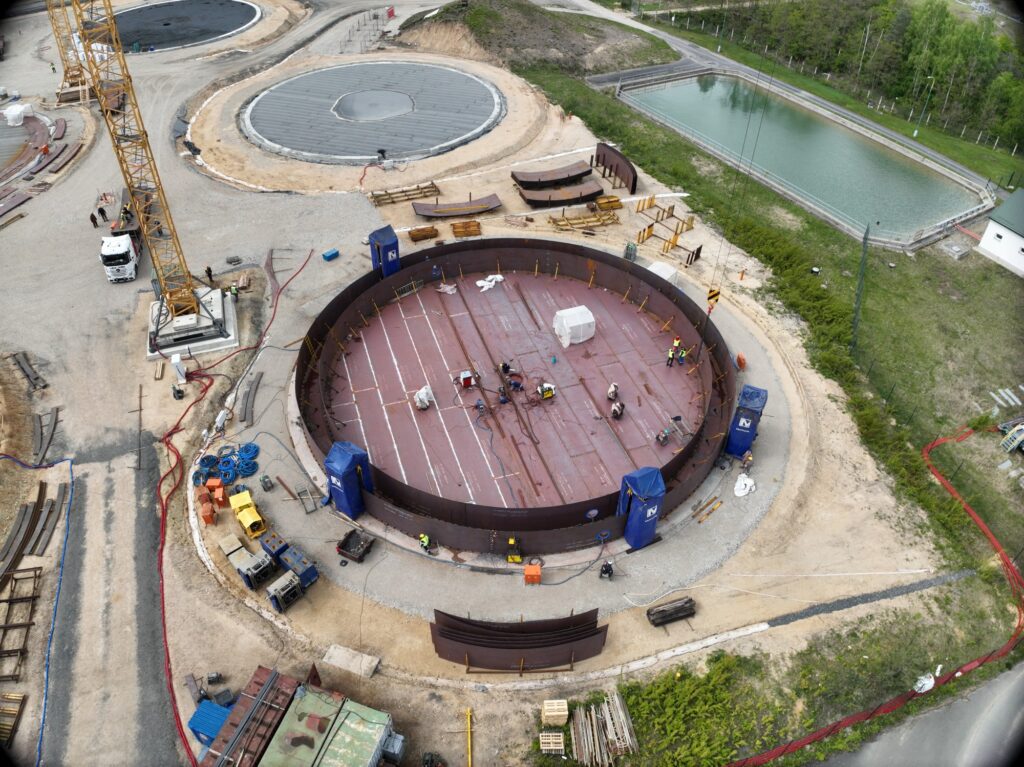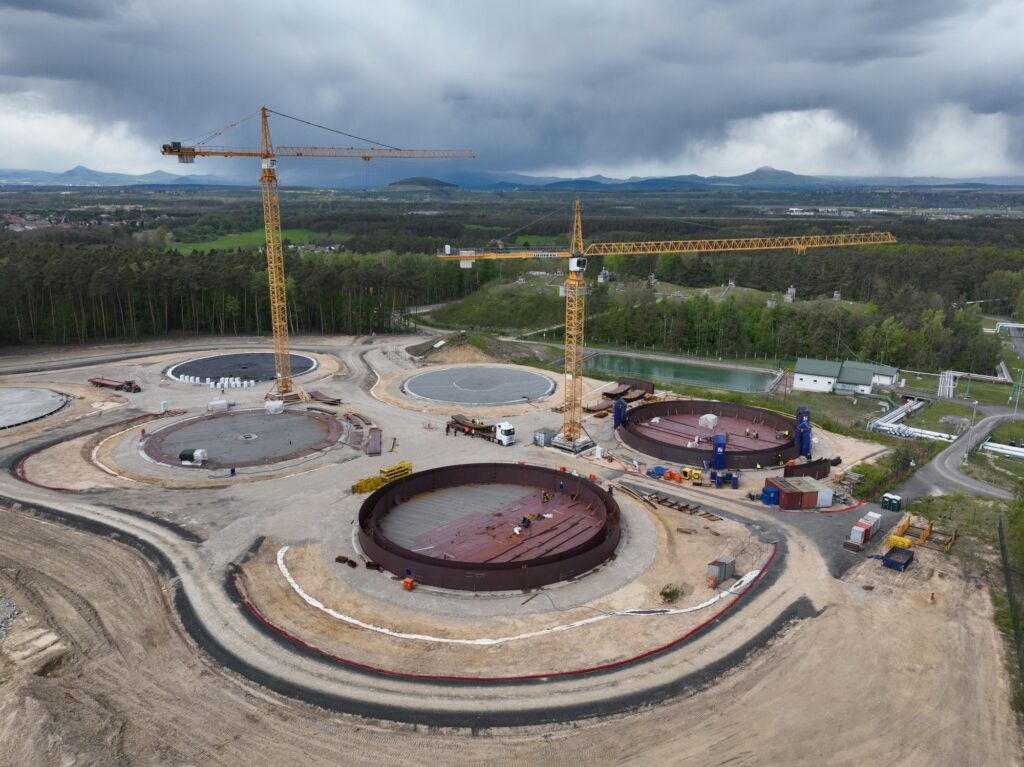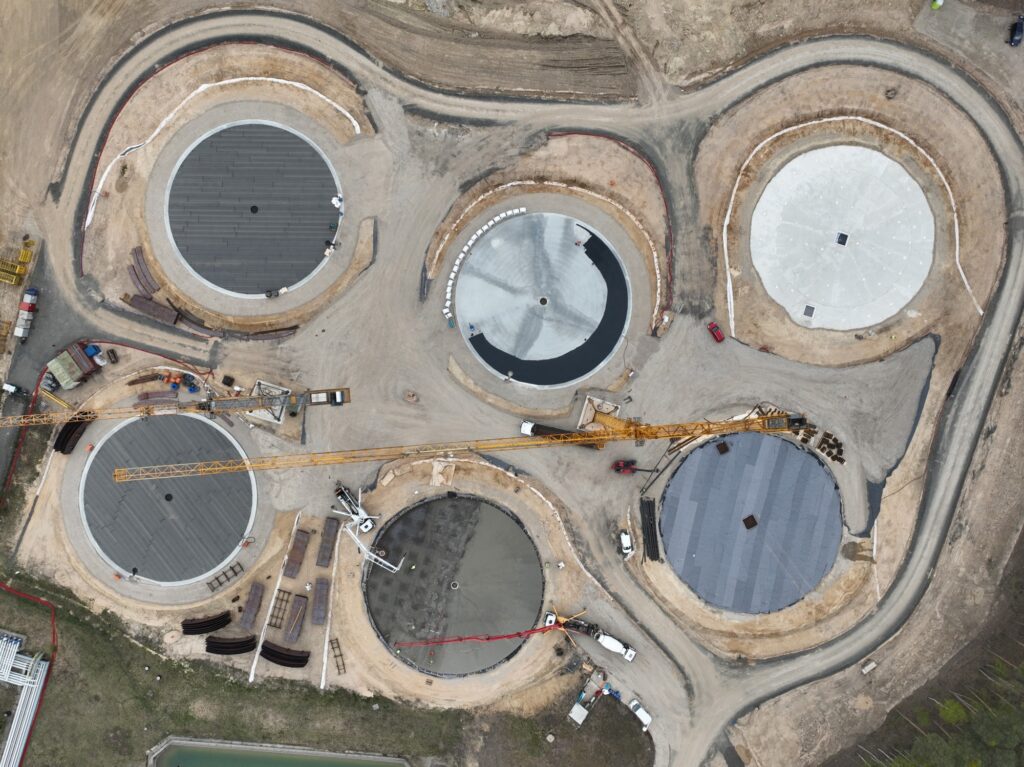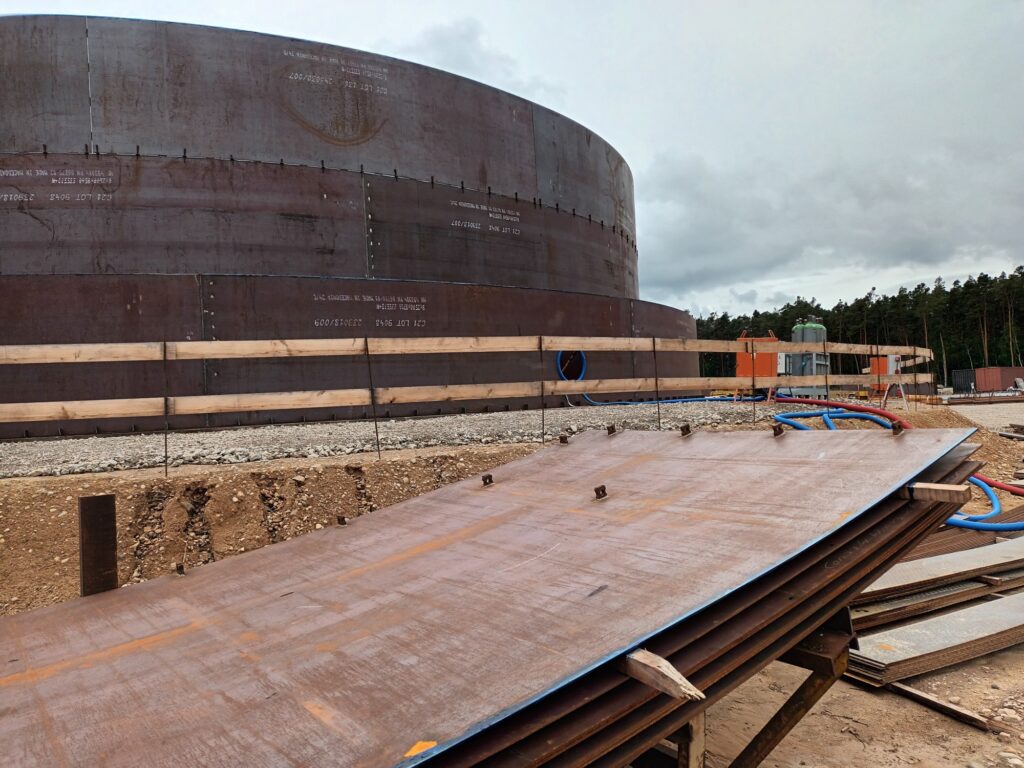Two of Six Giant Tanks for Strategic Fuel Inventories Going Up In Hněvice, Litoměřice District
28. 5. 2024It looks like a gigantic Lego set, but instead of building blocks, Metrostav DIZ builders are assembling giant sheets 10 m long, up to 2.5 m high and up to 11 mm thick. Welders are working on the parts already put in place and each weld undergoes multiple tightness checks. The ČEPRO complex in Hněvice, Litoměřice District, where petrol and diesel are stored, is being expanded to include six new tanks with a capacity of ten million litres each. Thanks to this investment, the capacity for strategic fuel inventories at the ČEPRO terminal in Hněvice will be increased by about twenty percent. Construction began last September and should be completed in early 2027.
At the construction site, which is dominated by two tower cranes with a height of over 60 metres, work has already begun on the installation of four steel storage tanks, which will be 18 metres high and 34 metres in diameter when completed. The finished foundation slabs for the remaining two tanks are already awaiting the installation of their steel structures. The tanks’ base plates must be able to support 10,500 tonnes, which is equivalent to the weight of more than 260 fully loaded lorries. Another interesting feature of the base plates is the unusual funnel shape, which enables easy draining of the stored product.
In this case, the key technical parameters for the safety of storage tanks are the rate and time of settlement of the foundation structures during the hydrostatic test. As a supplementary engineering-geological survey pointed out that the originally proposed foundation was not really suitable, the Metrostav DIZ builders had to design a different solution at the start of construction work.
“The originally proposed gravel piles would have risked a filled tank sinking several inches into the ground and we would have waited several months for final consolidation, which would have disproportionately impacted the overall construction schedule. Therefore, based on our extensive experience in the construction of these tanks and in agreement with the investor, we chose a method of foundation on reinforced concrete piles that allows for quick settlement of the foundation by only a few millimetres. To give you an idea: There are ninety piles under each foundation slab and each of them is 12 metres long and 60 centimetres in diameter,” said Daniel Riedl, project manager at Metrostav DIZ.
Another ploy that is based on the contractor’s know-how enabled the requirement for corrosion protection of the steel structure to be met even from the problematic underside of the tank bottom, which would otherwise be technically impossible to completely treat. The builders place asphalt strips on the foundation slab and the steel bottom is sealed into them by the action of sunlight. The work places particular emphasis on precision, because even after the insulation has been put in place, the surface must be level within a tolerance of one centimetre.
Each of the six double-walled tanks being being built consists of the tank itself and an external containment sump to prevent fuel leakage in the event of a hypothetical rupture of the tank wall. For the same reasons, the bottom of a tank is designed as a double bottom. There is a space of about a millimetre between the two bottoms with underpresssure and sensors that would indicate any leak problems to the control room. Although the tanks are made up of seemingly robust sheet metal, they are also affected by the pressure of the stored liquid and the ambient temperature. So normally a tank gets a little bigger during the day and smaller at night.
The welding of the individual parts and the subsequent tightness check is a separate chapter. Each weld is carefully documented and checked visually, by ultrasound, X-ray or a special bubble window. In the event of a leak, the welders promptly remedy it. A finished tank must not only be watertight, but also airtight, so that dangerous fumes do not escape. They are released from the storage space exclusively by means of special roof valves in the event of excessive overpressure.
After completion, each tank must pass a hydrostatic test. This consists of filling the sump and tank with water and monitoring the effect of the load on the foundation structures. In order for the test to be evaluated as successful, the foundation must not move for 72 hours.
The six new storage tanks will increase the Czech Republic’s strategic fuel inventories by 60 million litres. They will also increase the input capacity to the ČEPRO system. Hněvice is directly connected to both Czech refineries in Kralupy nad Vltavou and Litvínov and has a three-kilometre long railway spur track. It is a key resource in the fuel infrastructure in terms of the country’s energy security. This investment is currently one of the most significant for ČEPRO.
Metrostav Group companies have almost 25 years of consistent construction of large-capacity tanks and can therefore rely on a wealth of experience and know-how. Between 2000 and 2019, it built a total of seven oil storage tanks for MERO ČR, each with a capacity of 125,000 cubic metres, on the premises of the Central Oil Tank Farm in Nelahozeves. In 2011, it completed the construction of four reinforced concrete underground diesel storage tanks with a total storage capacity of 140,000 cubic meters for ČEPRO.
Contact details
Radim Mana
Metrostav Group Spokesman
Metrostav a.s. Koželužská 2450/4 180 00 Prague 8
T 266 019 715, M 601 110 376
radim.mana@metrostav.cz, www.metrostav.cz






